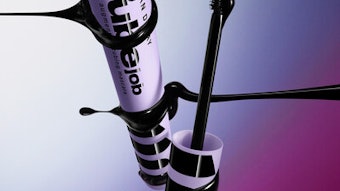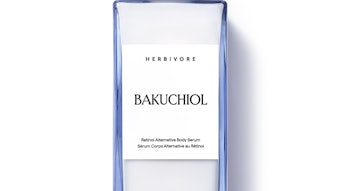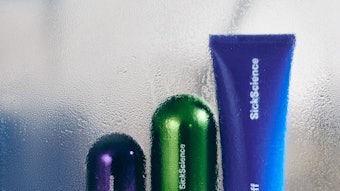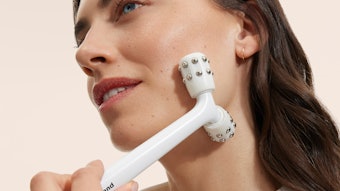From Israel to Los Angeles, 14 brand owners and marketers of natural and organic color cosmetics and personal care products, as well as one French perfume ingredient supplier, share with GCI magazine their perspectives of the expanding natural and organic beauty market. Focusing on key elements—individual health and overall well-being, environmental sustainability and social responsibility—these private and public sector business professionals discuss everything from their long-time utilization of natural ingredients to their introduction in the developing world of organic standards.
According to Laura Setzfand, vice president of marketing for Nature’s Gate and a GCI magazine editorial advisory board member, the natural and organic market is expanding in the beauty industry as the media informs consumers about natural ingredients and as new regulatory groups, such as the Organic Trade Association, NSF International and others, form national standards, defining the term “natural,” while differentiating it from the already standardized term, “organic,” which began in the food industry.
“The market will become segmented between those brands that fiercely adhere to strict ingredient standards, based on health and animal cruelty concerns, environmental stewardship and organic agriculture, and those brands that incorporate natural and organic ingredients to enhance a synthetic, performance-driven formulation,” Setzfand says. “Hair and skin care are the first entry points for natural personal care consumers and will continue to drive new consumers into the category.”
Whether poised on skin care, baby care or home fragrance as potential areas of growth, Setzfand’s peers have varying points of view. Here’s what they had to say.
In which ways are some of your products natural, organic or both, and what is the controversy in the beauty industry about the difference between the terms?
Debbie Ludington: Natural, to us, means that we can understand the ingredients.
Mike Indursky: Anything less than 100% organic can and often does contain synthetic ingredients, including those that are potentially harmful, such as parabens and phthalates. That is precisely why there needs to be a natural standard to first determine if the product is natural. Only then should it be determined if it is also organic and to what extent .. Burt’s Bees defines natural as ingredients that come from a purposeful, renewable source found in nature (flora, fauna, mineral) and processes that are minimal and don’t use synthetic/harsh chemicals, or otherwise dilute purity.
In the interest of helping consumers navigate this confusing landscape, we are working with the Natural Products Association and our competitors to develop The Natural Standard, one clear definition for “natural,” and a corresponding seal that consumers can recognize when seeking truly natural personal care products to maximize their well-being. The seal will be unveiled in spring 2008.
Vorravit Siripark: We define natural products as products with a minimum 95% of the total ingredients being natural ingredients or of a natural origin, while we define organic products as products which meet the natural definition, and within those natural ingredients at least 50% must be certified as organic. [Our] collection uses organic ingredients certified by the [U.K.] Soil Association.
Ido Leffler: Yes To Carrots products are both .. In addition to carrots, Yes To Carrots contains other orange fruits and vegetables—all sources from Israeli farmers holding a nationally recognized certificate proving they have met stringent standards set forth from the Israeli [Bio-]Organic [Agricultural] Association.
Kayla Fioravanti: We are a certified vegan line. We have gone to great lengths to insure that our ingredients are not animal-derived. We also have a unique organic preservative system that gives us a two-year shelf life.
Curt Valva: Since there is no current natural standard in the U.S. for personal care products, AUBREY—as a company and its products—are certified to the German BDIH standards. Some of our products are also certified organic to the USDA’s National Organic Program (NOP). We have been a certified NOP organic processor since 1994 and work very hard to live up to those food standards. We strongly believe in third-party certification for both natural and organic claims. I am a co-writer/developer in the publishing of a natural standard with other like-minded companies to be administered by the Natural Products Association. For over seven years now, we as a company have been deeply involved in the creation of organic standards—first independently, then with the Organic Trade Association’s Personal Care Task Force and, subsequently, with NSF International. I/we have been instrumental in the writing and development of these soon-to-be-released standards.
Which natural or organic ingredients are your company currently utilizing on a large scale, and what ingredient trends have you noticed among other beauty brands or suppliers?
Sharon Christie: Eucalyptus and lavender are always quintessential in terms of aromatherapeutic benefits. One particular ingredient we use for a lot of our scrubs is organic sugar from Brazil.
Curt Valva: We have been using organic rose hip seed oil and organic aloe juice (not from concentrate) since the ’70s .. Green tea, sea buckthorn and blueberries are known for their high antioxidant properties [and] are making inroads within the industry.
Mike Indursky: Burt’s Bees uses hundreds of natural ingredients in their products, including bee products like honey, beeswax and royal jelly, sugar enzymes, coconut and sunflower oils, pomegranate, ginger root extract, hemp seed oil, milk [and] shea butter.
Achille Riviello: [For drom’s pureganic Collection], we have selected about 10 candidates for full development. At the core of this list are sage, angelica seed, caraway seed and silver fir oils.
Bernard Guerra: We are a Greek owned company. Olive oil has been used in Greece in personal care products for the past 3,000 years.
Steve Byckiewicz: Our company was founded on olive oil-based products. We use grapefruit oils and orange and lime in many products—also pomegranate, pear and many vegetable-based raw materials.
Noah Bremen: We utilize ingredients such as coconut, vanilla and rosemary mint. We also incorporate cone flower extract, which speeds healing; shea butter, an excellent moisturizer; vitamin B5, a humectant; and jojoba seed oil to protect and moisturize, among others.
Vorravit Siripark: Our customers say that our sophisticated, unique bouquet of fragrances such as Thai jasmine, lemongrass and Indian sandalwood are unlike anything they have ever experienced before. These treasured botanicals are something we grew up with.
Christina Marcaccini: With the growth of the antiaging category, organics and naturals with proven efficacy, like organic Acai berry, with 10 times the antioxidant power of red grapes, have gained a lot of popularity .. We use preservatives from Japanese honeysuckle and anise, as well as a host of active botanicals, including a vegetable peptide, a skin revitalizing corn extract, a skin-calming caper bud and an organic beech tree bud extract.
Debbie Ludington: I think that most brands are now switching their surfactants to plant-based ingredients that are less harsh and come from renewable resources. In the candle business, soy wax has become more and more common as manufacturers re-tool and learn how to create candles from this natural and renewable wax, switching away from petroleum-based paraffin. In skin care formulations, you see more plant-based emollients and less petroleum-based ingredients such as petrolatum and mineral oils.
Where are the main supply chains for your natural or organic ingredients?
Christina Marcaccini: Sometimes it’s a tiny, one-ingredient company, and sometimes it’s a large company with hundreds of ingredients. I also love to look outside our industry, especially in the pharmaceutical industry, to see what discoveries they are making with natural botanicals. They have the research funds to send people throughout the remotest regions of the world to find new plant extracts that produce efficacious results. We have discovered some of our ingredients in these areas, such as regions of Africa, the Mediterranean, Australia and India.
Angella Green: To minimize our carbon footprint, we try to use local suppliers for both ingredients and packaging whenever possible. There are a few exceptions like our rooibos red tea, which is used in our Red Elements Skin Care, from Africa and our wild yam, which is in our Wild Yam Lotion, Crème and Deodorant, from Mexico. Where we buy our ingredients depends on availability and seasonality.
Debbie Ludington: You can find the supply chains on both the small-scale and the large-scale end of the spectrum. The big chemical manufacturers are now providing base concentrates that are made of natural ingredients and only require finishing enhancements such as nutritive oils, fragrance and herbs.
Kayla Fioravanti: Many of the organic and green ingredients are coming right out of the U.S. We purchase all of our raw ingredients from Essential Wholesale.
Vorravit Siripark: Asia is one of the top regions for natural and organic ingredients, given the richness and wide variety of natural resources.
Achille Riviello: drom is a German company—a Bavarian company—and we recognise the advantages of local upstream partnerships. Many Bavarian farmers have long traditions in organic farming, and the comparatively mild climate of the region lends itself to the cultivation of many different types of plants, including those usually found in the Mediterranean lands.
What’s the growth potential, in your opinion, for the naturals and organics cosmetics and personal care markets in the next few years, both domestically and globally?
Curt Valva: I see no end to the upwards trend. Double-digit increases will continue into the foreseeable future. With the rise in illness, pollution, global warming trends and so on, we all understand that something must be done. What better way to start than with what we put directly on our bodies?
Mike Indursky: The natural personal care market is predicted to double in size and household penetration by 2012. This growth is fueled by two trends towards inner well-being and outer well-being (environmental sustainability), impacting consumer decisions from the foods they eat to the personal care products they use, and choosing natural products is
a clear solution.
Carina Menzies: We anticipate that the vast majority of broadly consumed goods will have at least some percentage of organic components by 2015. The growth potential to make this a historical footnote is enormous, and this is because everyone’s eyes appear to be open.
Achille Riviello: It used to be just niche brands, but now you can find organic products even in private labels .. The American organic personal care market grew to $350 million in 2006—an impressive 24% growth over the previous year!
Kayla Fioravanti: I have heard reports of the growth being 20–28% per year.
Noah Bremen: Within the mass market, we believe 2008 will be the year that both retailers’ and consumers’ collective understanding expands exponentially.
Which product categories, specifically, within the natural and organic beauty market, do you see as having major growth potential?
Bernard Guerra: All of them. Baby skin care is in the forefront for obvious reasons. Women’s products are close, but even men’s grooming products will become more natural or organic.
Curt Valva: I see baby care as an area of continued growth. Skin care will continue to grow, as we all want to look and be healthier and younger.
Debbie Ludington: Baby care is wide open, because there really are only a few players, and it is a market where you aren’t trying to win over a customer who is brand loyal. New parents are very smart and very choosy, and [they] are willing to invest the time to learn about product ingredients. They are also willing to pay a bit more for skin care for their baby. We are also focusing on moving spa experience into the shower. Though bath products have always been a level performer, people really do want to add aromatherapy to their daily shower experience. This area extends beyond simple gels and skin care and is moving into shower fragrance. Home care is also a major opportunity, and though it isn’t the same as the beauty segment, we firmly believe the two are tied intimately.
Our customers want to create a healthy home environment; it rates right up there with skin care. They want to have great smelling, highly effective home care products to make the mundane tasks of keeping house more enjoyable. The home fragrance market is very attractive in terms of growth.
Angella Green: Fragrance-free and sensitive skin products are on the rise. Studies indicate that up to 30% of the population reports some sensitivity to fragrance. More than 80% report that exposure to fragrances is bothersome. Many synthetic fragrances contain phthalates, which have been linked to birth defects and health related issues.
Kayla Fioravanti: There is still a very large potential for mineral makeup. I believe we have only touched the surface
of the potential of this field. Many consumers are still buying the big brands
of makeup, even after they have changed their everyday personal care products. It seems to be the last [choice] of chemical cosmetics that consumers are making [before] they switch to natural.
Debbie Ludington: I think the market segment that will see great growth is natural food stores. This is where your customer is going to start visiting to learn about and see some of the natural formulations that they don’t see in the mass-market venues. And this visit will be a novelty, because this customer typically doesn’t visit this type of store.
What projects are on your company’s roster now and in the near future?
Sharon Christie: We’re involved in launching the first USDA certified bath salt collection, [with] some bath boosters and massage oils, and we’re always looking at improving plant-derived ingredient bases, whereby they have faster biodegradability.
Curt Valva: We are launching a line of all natural color products—face powders, cheek colors, lipsticks—[that are] all agriculturally based (sustainable, non-mineral based) .. Shortly thereafter, we will be debuting our USDA certified organic line-up of lip balms.
Kayla Fioravanti: We are working on launching a natural deodorant—with no chemicals at all.
Ido Leffler: We are harvesting our gardens for later this year with Yes To Tomatoes and Yes To Cucumbers. The idea is to go back to nature.
Christina Marcaccini: This year, I’ll be going back to Washington, D.C. to take part in the Natural Product Association’s lobbying day. The goal is to influence our congressmen’s position on upcoming bills in order to give consumers better access to natural product options and information.
The Panel
Sharon Christie
President and CEO
Aromafloria
www.aromafloria.com
Curt Valva
General Manager
AUBREY ORGANICS, Inc.
www.aubrey-organics.com
Mike Indursky
Chief Marketing & Strategic Officer
Burt’s Bees Inc.
www.burtsbees.com
Achille Riviello
Perfumer
drom Fragrances International, Ltd.
www.drom.com
Carina Menzies
Owner
Everyday Minerals
www.everydayminerals.com
Steve Byckiewicz
Founder
Kiss My Face Corp.
www.kissmyface.com
Noah Bremen
President
Noah’s Naturals
www.noahsnaturals.com
Vorravit Siripark
Marketing Director
Pañpuri
www.panpuri.com
Christina Marcaccini
Founder
RAW Natural Beauty, LLC
www.rawnaturalbeauty.com










